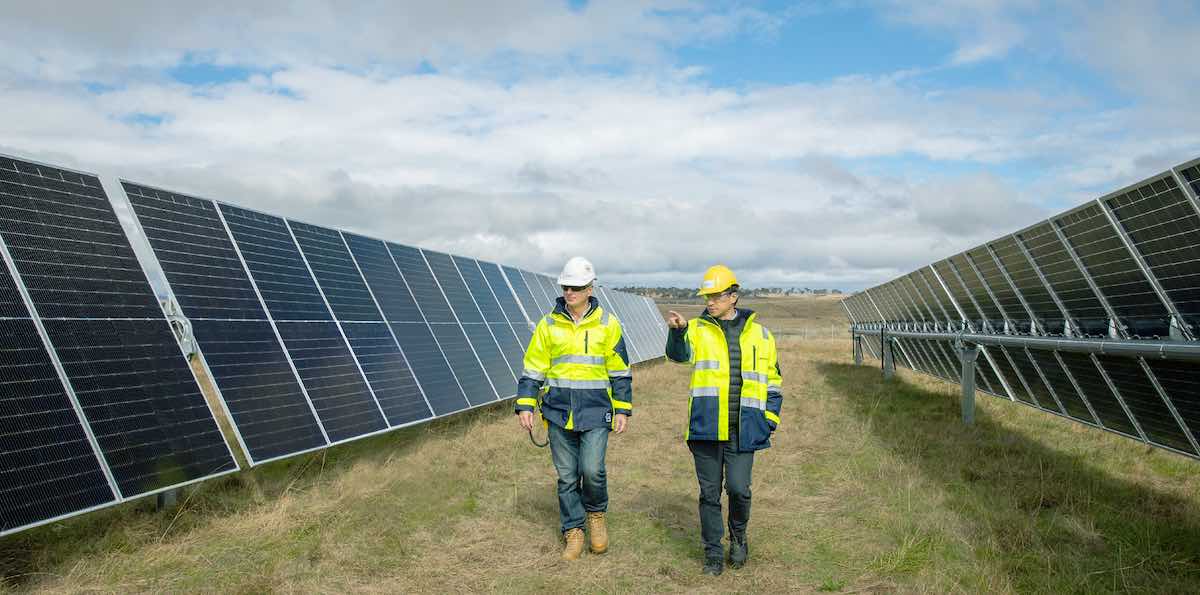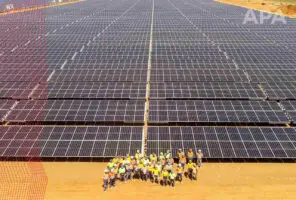Canada’s Brookfield Asset Management, the agreed new owner of Origin Energy, has significantly increased its planned spending on renewables and storage in Australia, potentially trumping iron ore billionaire Andrew Forrest for the bragging rights of the country’s biggest renewables play.
Brookfield’s nær 400-page submission to competition regulators outlines plans to spend up to $30 billion over the next 10 years on 14GW of new wind, solar and storage, which it argues will increase competition, lower prices, and accelerate climate action.
It further says that without its involvement, access to capital and determination to decarbonise Origin’s energy supply, Australia will fall well behind its renewable transition goals.
See also: “Urgent and daunting:” Brookfield boosts planned renewables spend to $30 billion
Brookfield’s planned rollout is smaller than Forrest’s stated pipeline of 20GW of new wind and solar, but Brookfield has the added motivation of needing its own projects in a relatively short time frame to decarbonise the electricity supplied to customer by Origin Energy, the country’s biggest utility.
It says the consortium – now supported by Singapore-based investment giants Temasek and GIC – is not necessarily looking to develop the proposed up to 14 GW ‘green build-out’ plan by itself, and is willing to partner with or outsource to various third parties at different stages of the supply chain.
But its submission does give a big hint at where some of these projects are coming from.
Origin’s own renewable development portfolio includes the Carisbrook, Yanco and Yarrabee solar farms, along with combined solar and battery projects at Dapper in NSW and Morgan in South Australia. The Yarrabee solar farm – which could grow to 900MW – also has approval for a big battery.
Then there are the huge battery only projects next to the Eraring coal fired power station that it intends to close in 2025. Origin has already committed to a 460MW/920MWh battery at Eraring and could expand this to 700MW and 2800MWh.
It also has big battery plans at Western Downs (500MW and 2000MWh) next to the Darling Downs gas fired power station in Queensland, and at Mortlake in Victoria, next to its gas generator there.
Origin is also mulling the 235MW expansion of the Shoalhaven pumped hydro project, although rising costs caused it to withdraw from bidding in a recent auction for long duration storage held by NSW. Brookfield’s submission says the project may be “re-tested” depending on government policies and market dynamics.
All in all, Brookfield estimates that Origin has around 4GW of projects that it would bring to market – if the bid did not go ahead. The next question is where the other 10GW would come from.
There is probably already a large queue of would-be developers outside the Brookfield’s offices, but its submission hints at some of the resources and projects it can draw on.
For instance, it now owns 100 per cent of the Spanish based solar developer X-Elio, which owns the 200MW (etc) Blue Grass solar farm in Queensland.
X-Elio has a pipeline of other solar projects including the Forest Glen solar farm near Dubbo in NSW, and the Sixteen Mile (NSW) and Willavale (Queensland) solar and battery storage projects. It says there are two other undisclosed solar projects in the pipeline.
In April this year, Brookfield agreed to buy the 315MW Moonlight Range wind project in central Queensland from Greenleaf Renewables, which will also come with a 105MW battery (storage duration not specified). That project is currently at the ‘land negotiation’ stage.
Brookfield is also working with Greenleaf on developing a further 600MW of wind projects in Queensland, although how all these Queensland projects are developed in line with the state-government’s new state ownership mandate remains to be seen.
The consortium has a few more irons in the fire through holdings held by Temasek and GIC, including a 17 per cent stake in Acen Renewables, which has some of the country’s biggest renewable projects under development.
These include the partially complete 720W New England solar project, along with a 200MW/400MWh battery, and the 400MW Stubbo solar farm, also in NSW and under construction.
Acen also owns the Birriwa solar and storage project, the Narragamba solar project, both in NSW, along with the Valley of the Winds and the Aquila wind projects in central NSW.
It is also looking to develop the Phoenix pumped hydro storage project in NSW, and still has hopes for the Baroota pumped hydro project in South Australia. Acen also owns the Bridle Track solar project in S.A., and the huge Robbins Island, Jim’s Plains and North East wind projects in Tasmania.
Brookfield says it has a separate team of at least four people in Australia whose focus is to identify and screen new greenfield development projects. The submission lists a whole heap of projects that it has looked at, but these are blacked out in the publicly available version because of commercial confidentiality.
It notes that its base case is to build the entire 14GW of proposed capacity itself, but it is also open to offers of a power purchase agreement with a third party, if that provided a more attractive return to Brookfield.
“This would be the case where another market player is willing to build the project for a lower return on capital for the same risk taken in developing the project,” it says.
Brookfield says its intervention in the Australian market will be crucial if Australia is to have any chance of meeting its now ambitious 82 per cent renewable share by 2030, as modelled under the Australian Energy Market Operator’s Integrated System Plan.
“There is a significant downside risk to achieving the AEMO ‘Step Change’ scenario outlined in its 2022 ISP,” it notes. “There is a real risk that the actual market delivery will reflect either the ‘Progressive Change’ or ‘Slow Change’ scenarios identified by AEMO.
These scenarios suggest total renewable generation of just 13GW and 16GW respectively by 2030, compared to the 38GW assumed in the step change scenario.
“Absent the Proposed Acquisition, the most likely outcome is that by 2033, there will be a material shortfall in the renewable generation and storage required to meet Australia’s net zero targets.”








